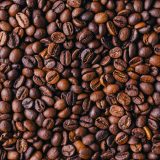There are many ways to lose weight and look after your well-being, but it’s difficult in this world of fast food and temptations that have become more available and portion sizes which have increased over the years.
It’s very easy to think that reducing your calorie intake will help, but the problem is hard because when many of us feel hungry our cravings kick in. One of the main reasons that we can’t decrease our calorie intake is because we are hungry. Feeling full and satisfied is essential for maintaining a healthy diet and preventing overeating. The idea of having a natural, nutrient-dense snack will help you to feel fuller for longer, helps control swings in blood sugar, and can reduce risks from chronic diseases. In addition to choosing healthier foods, several other scientifically backed tips will help train your brain to tamp down your appetite and ramp up feelings of satisfaction. Here are ten great ways to help you feel full while eating less.
Implement intermittent fasting
The explanation of this method is still unclear and it may not be superior to any other weight loss methods. It’s a time-restricted eating pattern of eating during a ten-hour window and fasting for a fourteen-hour window can help keep hunger and your appetite in check. Sometimes we eat at night or at other times when we are not really hungry. It has been found that when you try time-restricted intermittent fasting, can help you avoid mindless eating, here is a link to the Harvard University School of Public Health to explain this method of fasting. (Chan, n.d.) Harvard T.H. Chan School of Public Health
Limit the number of foods you eat at each meal or snack
They say that variety is the spice of life, but too much variety in your meals may be one of the reasons why people are overeating. Not to get too technical but when you are eating a celebration dinner or from a buffet we all tend to overconsume our calorie intake, this is called Sensory-specific satiety and it’s a psychological phenomenon that plays a key role in limiting our food intake. It refers to the decrease in the pleasure derived from consuming a particular type of food as we consume more of it. Everyone is prone to Sensory-specific satiety, so by reducing the number of different flavours and aromas on your plate, you will naturally feel satisfied sooner. This can lead to a greater sense of satisfaction with the meal and ultimately give you healthier eating habits and portion control. Here is a link to the American Journal of Clinical Nutritional information which will give you an insight into limiting the number of different aromas and flavours on your plate. (Gemert, 2004)
American Journal of Clinical Nutrition
Highly processed foods
Food manufacturers have perfected the art of making delicious, crave-able foods that are digested quickly and make us want more and more. Food with specific combinations of ingredients, like sugar and refined carbohydrates, fat, and salt can trigger addictive behaviours. When we eat foods which are high in sugar and refined carbohydrates, it triggers a feel-good dopamine response in our brain. When the response diminishes, it makes us crave these foods more even when we are not hungry. Some of the most addictive foods include chocolate, ice cream, chips, pizzas, crisps, cakes, burgers, muffins, and breakfast cereals. What all these foods have in common is that they are generally highly processed and have added fat or refined carbohydrates. To give you a better insight, there are two links at the end of this item. One from clinical chemistry and one from Plos which will show you their studies and findings on these food products. (Lennerz, 2018) (Gemeret, n.d.)
Sleep more
Research suggests that getting an appropriate amount of sleep plays a crucial role in controlling hunger hormones and preventing overeating. Contained in a key study published in the British Journal of Nutrition. It reported that poor sleep resulted in increases in hunger hormones, resulting in participants reporting being hungry after poor sleep. This and other studies show that sleep deprivation leads to an increase in ghrelin, the hormone responsible for stimulating appetite, while decreasing levels of leptin, which signals fullness. Getting sufficient sleep, typically around 7 to 9 hours per night for adults, can help restore the balance of these hormones, making it easier to maintain a healthy weight and resist the temptation to overeat. Here is the link to the British Journal of Nutrition. (Med, 2013)
Eat more oats and porridge
Starting your day with a bowl of oatmeal or refreshing overnight oats can help fuel your satisfaction. Oats are rich in soluble fibre., particularly beta-glucans, which have been extensively studied for their appetite-suppressing effects. Not to mention their ability to lower harmful LDL cholesterol levels. One notable study published in the Journal of American College of Nutrition demonstrated that consuming oatmeal increased feelings of fullness and reduced hunger compared to a low-fibre cereal., leading to fewer calories consumed later in the day. This sustained feeling of fullness not only helps in controlling calorie intake but also supports better portion control and healthier eating habits. In addition to eating oats, hot or cold, you can also incorporate them into smoothies. Baked goods, and ground meats to increase feelings of fullness. Here is the link to the Journal of the American College of Nutrition. (Greenway, 2015)
Snack on apples
Apples are rich in soluble fibre, pectin, and water, two components that make them a great pick to curb hunger and enhance satiety. A review article published in the Journal of the American College of Nutrition reported that apples can help induce weight loss through several mechanisms. The pectin fibre in apples helps slow the digestion and absorption. Of apples to help enhance feelings of fullness. A medium apple has about 100 calories and 4.5 grams of fibre, making it a convenient and nutritious choice for those aiming to reduce overall calorie consumption. Here is the link to the American College of Nutrition. (Asgray, 2018)
Beans and legumes
Beans, peas, lentils, and chickpeas are excellent sources of plant-based protein, fibre, slow-to-digest carbohydrates, and beneficial antioxidants. Research published in Advances in Nutrition reveals that the high fibre counts and relatively low calories make these foods a great addition to keep you full while eating fewer calories. The study shows that the individual reports feeling fuller after eating legumes, compared to meals without them. Legumes help keep blood sugar levels stable, which in turn, helps keep you satisfied longer. Enjoy beans and legumes in salads, soups, and stews, and you can even mash them and add them to baked goods. Here is the link to advances in nutrition. Advances in Nutrition
Eggs
Eggs are considered the gold standard of high-quality protein, and the protein in eggs can help you feel fuller for longer. Studies with eggs versus cereal or bagel breakfasts have revealed that an egg-based breakfast increases feelings of fullness and is more effective at reducing hunger and enhancing fullness. One study was published in the International Journal of Environmental Research and Public Health. Reported that the study participants had fewer calories at lunch and reported feeling fuller longer when eating an egg-based breakfast versus an equal-calorie breakfast of cereal, milk, and juice. While eggs at breakfast. It is a great way to start your day, keeping hard-boiled eggs on hand is a nutritious between-meal snack that may help ensure you keep your overall calories in check. Here is the link for the International Journal of Environmental Research and Public Health. (Keogh, 2020)
Have water or soup before meals.
Another effective strategy to make yourself feel full while eating fewer calories is to drink 16 ounces of water or half a bowl of vegetable soup before your lunch or dinner. A study published in the journal Obesity reported that those who drank about two cups of water before their meals and followed a calorie-controlled diet lost about 5 pounds more during the 12-week study, compared to dieters who didn’t drink water before their meals. A study from Penn State University revealed that starting your meals with soup resulted in consuming about 20% fewer calories during the meal. Drinking water or enjoying lower calorie soups before will help keep you satisfied due to the increased volume of the meal with the addition of water or soup. Here is the link to the Penn State University study and the journal Obesity. (Salva, 2010) (Penn, 2007)
Using smaller plates and bowls
Many people grew up in a household where they were told to clear their dinner plate in other words to eat everything that was on the plate. If your plates and bowls are oversized, chances are your food portions are too, thanks to the Del Boof illusion, the phenomenon that causes individuals to overeat when food is served on or in larger plates and bowls, according to research published in the Journal of Consumer Research. Simply downsizing your tableware could help you serve more appropriate and satisfying meals and snacks while helping to reduce your daily calories. Incorporating these foods and other changes into your daily diet can help you achieve and maintain feelings of fullness, making it easier to control your calorie intake and support your overall health and weight management goals. Remember that a balanced diet, along with portion control and mindful eating, is the key to achieving lasting satisfaction and well-being. Here is the link to the Journal of Consumer Research. (Wansink, 2011)
Bibliography
Asgray, K. R. (2018, december 2). Journal of American college of Nutrition. Retrieved from National Library of Medicine: https://pubmed.ncbi.nlm.nih.gov/29630462/
Chan, T. (n.d.). Nutrrtion source. Retrieved from Harvard school of public health.
Gemeret, S. A. (n.d.). Plos one. Retrieved from National Library of m: https://www.ncbi.nlm.nih.gov/pmc/articles/PMC4334652/
Gemert, s. W. (2004, November 28). National Library of Medeicine. Retrieved from National Library of Medeicine: https://pubmed.ncbi.nlm.nih.gov/15447886/
Greenway, R. (2015, November 30). National Library of Medicine. Retrieved from National Library of Medicine: https://pubmed.ncbi.nlm.nih.gov/26273900
Keogh, C. (2020, December 3). MDPI. Retrieved from Envirnomental Research and Public Health: https://www.mdpi.com/1660-4601/17/15/5583
Lennerz. (2018, December 2). Pub Med. Retrieved from National Library of Medicine: https://pubmed.ncbi.nlm.nih.gov/29158252/
Med, P. (2013, November 29). National Library of Medicine. Retrieved from National Library of Medicine: https://pubmed.ncbi.nlm.nih.gov/22682471/
Penn. (2007, december 6). Penn State. Retrieved from Penn State: https://www.psu.edu/news/health-and-human-development/story/eating-soup-will-help-cut-calories-meal/
Salva, D. D. (2010, December 6). Pub Med. Retrieved from National Libray of Medicine: https://pubmed.ncbi.nlm.nih.gov/19661958/
Wansink. (2011, December 7). Journal of Consumer Research. Retrieved from Journal of Consumer Research: https://academic.oup.com/jcr/article-abstract/39/2/215/1795747











